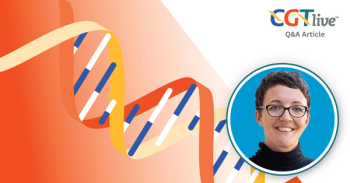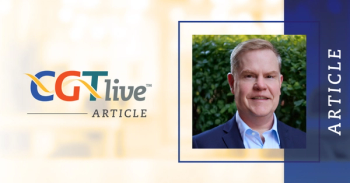
Gene Transfer Versus Gene Editing Approaches in Cardiology
Faraz Ali, MBA, the chief executive officer of Tenaya Therapeutics, discussed the company’s decision to supplement the gene transfer programs in its pipeline with gene editing programs.
This is the second part of an interview with Faraz Ali, MBA. For the first part,
Initial efforts in bringing gene therapy to cardiology have focused on addressing loss-of-function mutations through gene transfer therapies that provide a functional copy of the gene in question. Pathogenic gain-of-function mutations, however, require a different approach: either gene silencing, or gene editing.
Tenaya Therapeutics is currently pursuing the development of both gene transfer and gene editing approaches to treat different cardiovascular diseases. In an interview with CGTLive® at
CGTLive: Why is Tenaya shifting focus from gene transfer therapies to gene editing therapies?
Faraz Ali, MBA: It's not that it's a shift away from gene transfer as much as we also saw opportunity [in gene editing] all along. Back 2018 or so we prioritized literally hundreds of genes, that are implicated in either rare or prevalent forms of heart disease, and came up with a prioritized list. Back then, the obvious low hanging fruit was gene transfer, where simply adding a healthy copy of a gene would be predicted to do something good for the health of those patients.
But we always knew even back then that there were a large number of genes for which the gene transfer approach wasn't going to work. The mutations were gain-of-function mutations where you're going to require either a silence or an edit in order to prevent the mutant protein from wreaking havoc in the heart. But we didn't have the technology back then in 2018 to go after them. I think what you have now today is we have a few gene transfer assets in the clinic—we have a few more programs in our pipeline—and we're very excited with that data, the preclinical programs in our pipeline—but now that technology has evolved, and the sophistication has improved so that we think we can now start to look at going after some pretty bad diseases where the only hope would be a gene edit, or a silence. There's been an explosion in gene editing that's been captured here at ASGCT and us and our scientific founders are beginning to apply that in new programs.
So I wouldn't call it a shift away from something as much as beginning to lean into what else is now possible with the tools at our disposal. All the work that I just mentioned earlier about novel capsids and novel promoters and a novel manufacturing platform—all of that is, of course, directly applicable to gene transfer—it is also directly applicable to gene editing technology. The platform enhancements that we do open multiple opportunities for us. Gene editing is an exciting new horizon for us, adding on top of what we're doing in gene transfer.
This transcript has been edited for clarity.
Newsletter
Stay at the forefront of cutting-edge science with CGT—your direct line to expert insights, breakthrough data, and real-time coverage of the latest advancements in cell and gene therapy.































